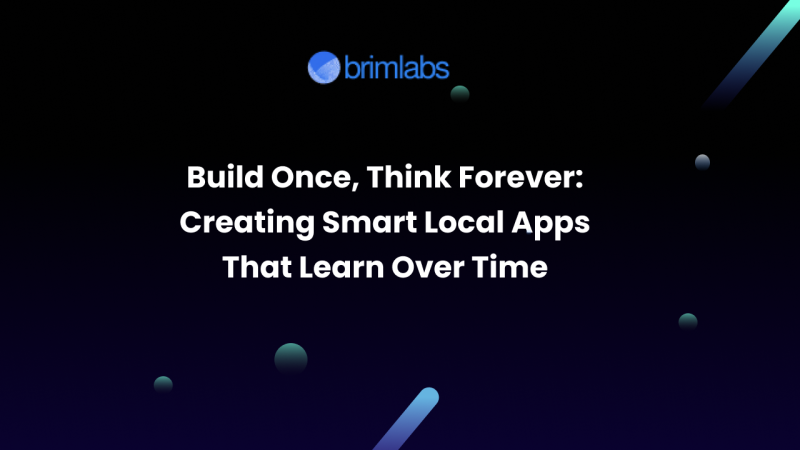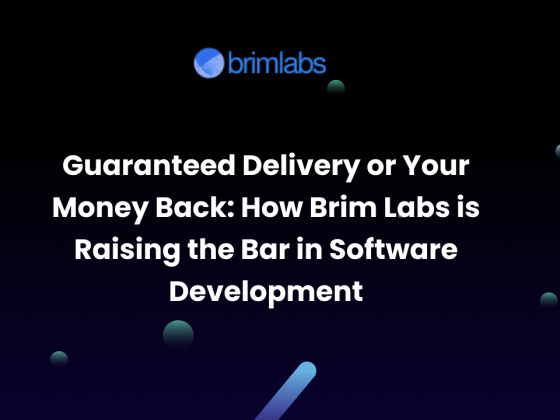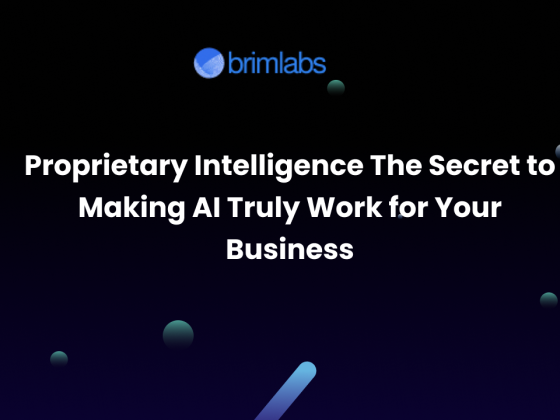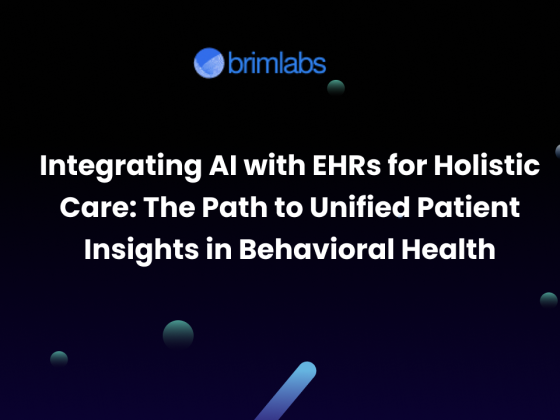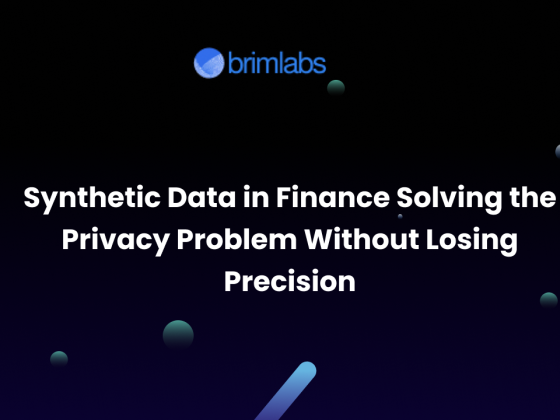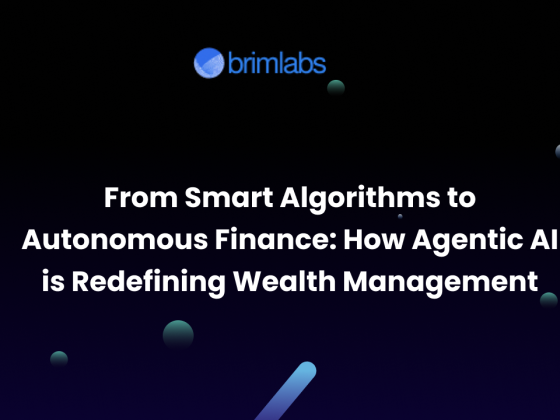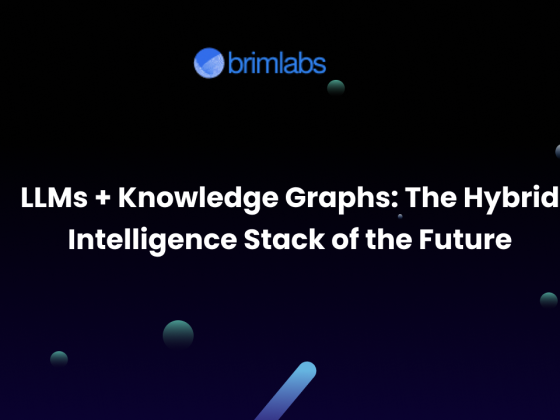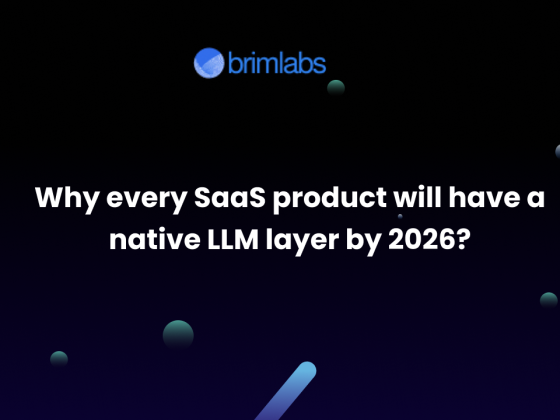In a world where software is constantly evolving, what if the smartest applications were the ones that kept learning, without needing to be rebuilt?
That’s the promise of smart local applications powered by AI: tools that live on your desktop, run offline, and continuously adapt to your behavior and business logic over time.
At Brim Labs, we believe the future isn’t just in the cloud, it’s also on your desktop, where AI meets privacy, speed, and contextual learning.
The Shift: From Static Software to Self-Evolving Systems
For decades, desktop applications were static. You’d install them once, and they’d remain the same until a manual update. But with the advent of lightweight AI models, on-device machine learning, and context-aware design, that paradigm is changing.
Today, it’s possible to build a local application that doesn’t just “do”, it learns.
- Learns how users interact with it
- Adapts its interface and workflows
- Remembers preferences and patterns
- Improves with each input, all without relying on the cloud
Why Local AI Apps Are Gaining Ground
1. Data Privacy and Control: Many industries, from healthcare to finance to legal, require stringent data handling. Keeping intelligence local eliminates the need to send sensitive information to the cloud.
2. Offline Access and Speed: AI-powered apps that work without an internet connection are critical for field teams, high-frequency traders, or operations in bandwidth-constrained regions.
3. Cost-Efficiency: Running AI models locally reduces API usage costs (like OpenAI tokens) and server overheads, especially for high-frequency workflows.
4. Personalization at the Edge: On-device AI can personalize experiences in ways that centralized models can’t, deeply tied to individual context, usage, and device behavior.
What Makes These Apps Smart?
At the core of these systems are learning loops, architectural patterns that allow the software to improve over time. Some of the key components include:
- Embedded LLMs or fine-tuned small models (such as Mistral, LLaMA)
- Reinforcement learning through user feedback
- Contextual memory layers (such as summaries of past inputs stored locally)
- Rules engines that update based on behavior
- Multimodal input parsing (images, voice, text, PDFs) that evolves over time
In short, these apps behave less like scripts and more like smart collaborators.
Real-World Examples
- Thinkorswim by TD Ameritrade, E*TRADE Pro, MetaTrader: These desktop trading tools offer powerful local performance for real-time charting, technical analysis, and order execution. The next evolution? AI agents that learn your watchlists, flag unusual activity based on your trading history, and auto-generate insights from news sentiment, all locally.
- DICOM viewers like RadiAnt, Horos: Diagnostic tools are often desktop-based for speed and data privacy. Imagine embedding an AI agent that learns from image interpretations or clinician annotations over time, helping radiologists or doctors identify patterns faster, even offline.
- CaseMap, TrialDirector: Legal professionals rely on desktop tools to manage evidence, case research, and document review. An AI agent could learn how a law firm drafts contracts, cite cases, or redline documents, making the software increasingly intelligent with every use.
What It Takes to Build a Smart Local App
1. Lightweight AI Integration: Rather than full-scale LLMs via APIs, we use optimized local models or hybrid setups that combine offline intelligence with occasional cloud syncs.
2. Learning Architecture: We design for continuous improvement: every interaction is stored, labeled, and used to refine future behavior. Think autocomplete that learns how you think.
3. Multimodal Support: PDFs, voice notes, spreadsheets, emails, and smart local apps should process everything a human does, not just text.
4. Cross-Platform Compatibility: Whether it’s macOS, Windows, or Linux, users expect smooth, native performance.
Why Now?
Recent breakthroughs have made this shift possible:
- LLM compression and quantization allow models to run on standard laptops
- Edge computing platforms like Vercel Edge Functions and ONNX Runtime
- User demand for privacy, speed, and offline capability is rising
- APIs are expensive, and relying on third-party uptime is a business risk
The Brim Labs Approach
At Brim Labs, we’ve worked with companies across fintech, healthcare, and digital commerce to build local AI tools that think like their users. Our team combines:
- Full-stack engineering expertise
- Experience with LLM fine-tuning and optimization
- UX/UI that adapts to cognitive patterns
- A mindset of co-building like a product partner
Our motto: Don’t just deploy an app. Deploy a teammate.
Closing Thoughts
The next wave of innovation isn’t just in how smart your software is, it’s in how well it learns you. With local-first AI apps, you build once, and they grow forever.
If you’re thinking about bringing AI closer to your users, let’s talk.

